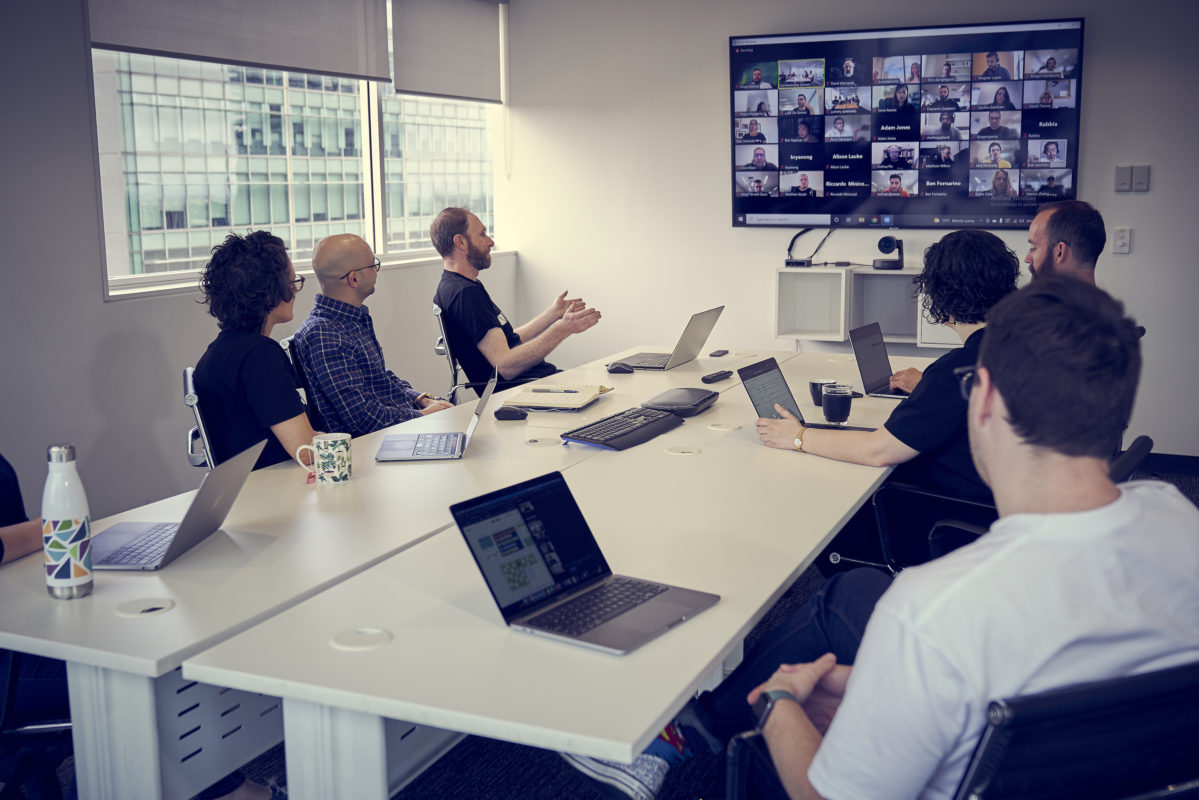Meet the company that’s shaking up traditional job descriptions to make them more fluid and flexible.
Many HR professionals would consider the job description essential to the recruitment process. But, as work becomes more fluid and technology changes our day-to-day ways of working, is this static document keeping up?
HRM spoke with a health technology company that’s trialling a different approach.
A dynamic approach to job descriptions
If you were an HR professional working at a small company, odds are you’d wear different hats throughout the day. In the morning you might be an HR advisor, evaluating employment policies. By lunch, you could be a recruitment manager, reviewing job ads and interviewing potential candidates. And by afternoon you’re the payroll owner.
And there are implicit tasks too – such as heading up an employee resource group or providing training on how to use new systems.
However your work days play out, odds are that it looks different to the job description (JD) you signed when you first joined the company. And as work becomes more fluid, is a static document outlining your duties and KPIs still relevant? Or, is it in need of a shake-up to evolve with the needs of the modern workplace?
Lumary, a healthcare software provider, is moving beyond traditional JDs and taking a different approach to job clarity called dynamic roles.
“Dynamic roles are designed to help us establish structure and achieve role clarity in a complex and dynamic environment,” says Ashleigh Thiel, HR Advisor at Lumary, and an AHRI member. “It’s bigger than abolishing job descriptions. It’s a large-scale change that challenges the traditional ways of working and how we talk about things like job descriptions.”
The way Thiel sees it, roles are created for an organisation, but ultimately it’s people who bring the roles to life by energising them. Dynamic roles allow employees to engage in multiple roles, by removing the traditional boundaries enforced by a JD.
“A traditional JD won’t cover everything a person will do in their role, and this is where a lot of role clarity issues tend to surface. On the other hand, if a person feels locked into a singular role, they may not feel the freedom to experience other areas of the organisation.” – Ashleigh Thiel, HR Advisor at Lumary.

Dynamic roles in practice
So what would a dynamic role look like in action, such as when you’re going out into the job market to recruit a new employee?
Let’s say you’re recruiting for a marketing coordinator. The job ad would still have an official title, so candidates know what they’re applying for. In the ad, Thiel might include a paragraph that alludes to role dynamism.
Here’s how she might phrase it:
“Lumary’s roles are defined to a certain extent, and our employees understand their key domains and what they’re setting out to achieve when they come on board. However, we don’t restrict people by their title or their function.
Team members do what they can with their skills and expertise to contribute to achieving the team’s goals. Everyone is supported to sense the environment around them, identify opportunities and problems, contribute insights and add value wherever they can across Lumary.”
Once a candidate joins the team, Lumary maps an overarching purpose to each dynamic role, which acts as the employee’s north star.
This speaks to the heart of role clarity, by encouraging the organisation to truly consider why the role exists. It also means that everyone else who works with that person truly understands what they do, says Thiel.
For example, the marketing coordinator’s purpose might be to ‘Provide an engaging website experience that communicates what we do to our customers and prospective employees.’
Below that, their accountabilities would describe goals, written broadly to encourage innovation and proactivity.
“We don’t want to tell people what to do,” says Thiel. “We want to provide the flexibility and autonomy for people to decide how to perform the role, aligned with fulfilling their role’s purpose.”
For example, instead of writing overly descriptive accountabilities like ‘collaborate with stakeholders across the organisation to gather insights about website content’ or ‘review website activity to measure the engagement of website content’ Lumary would include something simple like, ‘Create delightful and engaging content for the website’.
In doing so, they are encouraging each individual to choose how they reach their goals and fulfil their role’s designated purpose.
“It’s setting up an environment where the person can proactively achieve a goal. But it doesn’t mean there’s no support or structure around them. They have a whole team to support them.”
She also highlights the importance of transparency. At Lumary, everyone can see their colleagues’ dynamic role profiles. And if two people are working on similar tasks, they’re encouraged to acknowledge the duplication, find a way to work on it collaboratively and achieve great things together.
“As with any change management piece, you’re dealing with humans at work. It takes time, lots of education, conversations and talking through emotions. You need to be patient and understand that there will be disruption, confusion, maybe a little bit of chaos at the start as the team unlearns and relearns.” – Ashleigh Thiel, HR Advisor at Lumary.
How does Lumary measure success?
The teams piloting dynamic roles at Lumary operate in a sprint cycle. At the end of each sprint, they host a retrospective and reflect on successes and learnings. They use this time to evaluate each dynamic role.
They might discuss any tensions or gaps, says Thiel. They’ll also raise whether they think any roles need reviewing based on their observations during the sprint.
“Maybe since we first wrote the dynamic role, [the employee’s] accountabilities may not be relevant anymore, or the goal has changed,” she says. “If a change to an existing role is needed, we’ll collaborate with the individual who energises that role and then any updates will be communicated to the team.”
And if there’s a skill or experience that’s missing, Lumary can hire someone new, or find out if there’s someone else in the company who might be able to step in.

An opportunity for learning
While Lumary is still in its early days of piloting this program, Thiel says they’ve seen promising results so far when it comes to role clarity, self-management and enabling true flexibility.
“The process has made it easier to bring together cross-functional teams with a diverse set of experiences, skills and backgrounds,” she says. “Our people know they won’t be boxed into a certain category once they have a certain label. It’s all about forging your own path and dynamic roles are an enabler for this.”
That’s not to say it’s been a seamless process.
“As with any change management process, you’re dealing with humans at work. It takes time, lots of education, conversations and talking through emotions. You need to be patient and understand that there will be disruption, confusion, maybe a little bit of chaos at the start as the team unlearns and relearns.”
Thiel says it’s all about having a growth mindset and asking “why” instead of accepting what’s always been done. Stopping at “because it worked last time” may be holding your team back.
“Ask yourself – what’s good enough for now and safe to try? By that I mean, if job descriptions are holding your team back, what can you do as a good and safe thing to start and enable your team better? Try something new, see how it goes and evolve it.”
Ensure your team is thinking and acting strategically at every stage of the employment lifecycle with this short course from AHRI.


In modern human capital management the organisational “chart” is a map of the various contributing elements. These elements become roles then positions with an incumbent (employee or in some cases say where it is no full time, a contractor. The contributing elements come from the strategic plan and while the how to achieve is flexible the outcomes are defined (performance measures). I don’t see this flexibility within a well defined and measured structure in this article. Any shortfalls identified in the competency based interview need to be addressed before the appointment e.g. development plan in the LoO or support (internal… Read more »
US President Eisenhower is credited with saying: “Plans are useless. Planning is essential.” You can apply the same thinking to job descriptions. The real value of JDs is the process of creating them, not the document. Creating a JD achieves a common understanding around the requirements of the organisation when filling a role. Good employees, in my experience, have always bent jobs in ways that both reflect their individual strengths and add value to the organisation. Job descriptions are merely a tool. A tool may be used well or used badly. JDs have never been a limitation on flexibility unless… Read more »
I would like to join discuss especially in food andotechnology and biochemistry .in application of GMO in our daily life that the technology will help to improve our environment and improve production of food with out any qurelz especially in developing country .GMo help in bio fuel production which we will not depend on on fossil fuels but we will be able to use technology but also in recombinant DNA we will produce product which will contain sufficient protein
I am the perfect person for this job…its a dream come true for me…this what i have been praying and hoping for chance…i have no work experience…but i can amaze the whole world..i can do what the flash..supergirl..all super heroes powers and magics of technology..for my real time starts from 2030 am an old android version..but can controll plannet earth in hours..they only have to give me chance…i can do wonders
Human resource management is a job that is easily corrupted and mishandled in kenya and most parts of africa… HUMAN RESOUCE MANAGEMENT 1.Allocation of resources 2.fair distribution of resources 3. Human resource system updates 4.It knowledge is a must for added advantage no need of another employee for IT. 5.motivating workers 6.Strategic planning of the company major agendas and taking part in policy making..and reviews..setting objectives.. 7.Taking part in management of business as a general or departmental manager. 8.creating a friendly envirornment for the employees and top level managers 9.office filing..staffing.. 10.orientantion..advertising…recruitment..employing and deploying candidates..offer training and always work on… Read more »